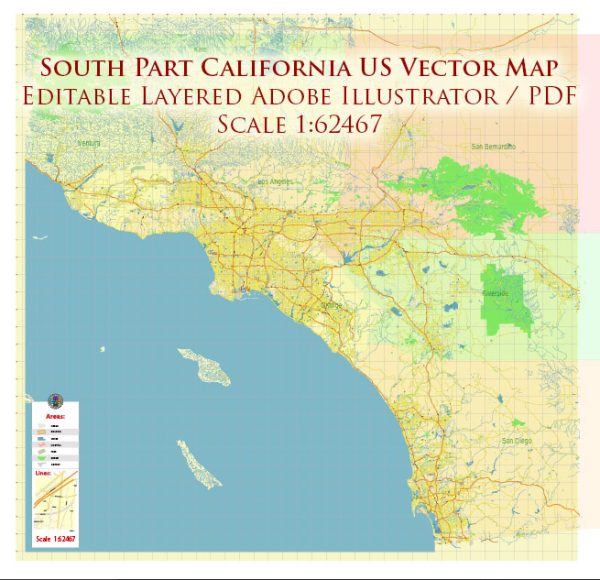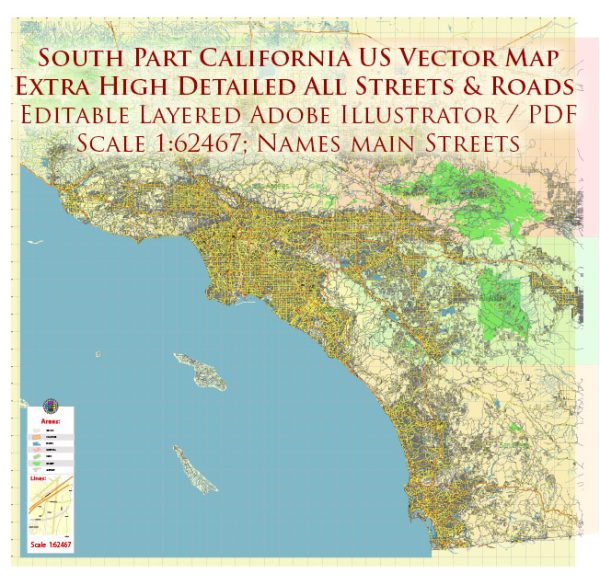Southern California, a region in the southwestern part of the United States, is known for its diverse and dynamic urban development. It encompasses a variety of cities, counties, and communities, each with its own unique character and urban planning challenges. Here’s a general description of urban development in Southern California:
- Sprawl and Suburban Expansion: Southern California is often associated with suburban sprawl. The region experienced significant growth in the mid-20th century, leading to the development of vast suburban communities and extensive road networks. This sprawl is characterized by low-density housing, shopping centers, and office parks, often connected by a network of freeways.
- Multi-Centered Cities: Many cities in Southern California are not centered around a single downtown core but have multiple centers or hubs. For example, Los Angeles has several significant commercial and cultural centers, such as Downtown Los Angeles, Hollywood, and Santa Monica.
- Diverse Architecture: The architecture in Southern California varies widely. You can find Spanish Colonial Revival, Mid-Century Modern, Mediterranean, and contemporary architectural styles throughout the region. These styles reflect the diverse cultural and historical influences in the area.
- Transportation Challenges: The region faces ongoing challenges related to transportation and traffic congestion. It has a complex network of freeways, and public transportation options like buses and light rail systems are continually being developed and expanded to address congestion and air quality concerns.
- Environmental Considerations: Given the region’s susceptibility to earthquakes, urban development in Southern California must adhere to stringent building codes and regulations to ensure structural safety. Additionally, there is an increasing focus on sustainable development and environmental preservation, particularly in response to concerns about water scarcity and wildfire risk.
- Cultural Diversity: Southern California is one of the most ethnically and culturally diverse regions in the United States. This diversity is reflected in the urban landscape, with neighborhoods and districts that cater to various cultural communities, offering diverse cuisines, festivals, and cultural events.
- Entertainment and Tourism: The region is a global hub for the entertainment industry, with Hollywood being a significant cultural and economic center. The tourism industry is a vital part of Southern California’s economy, with attractions like Disneyland, Universal Studios, and beautiful beaches drawing visitors from around the world.
- Innovative Technology and Research: Southern California is also known for its contributions to technology and research, with the presence of major universities, research institutions, and technology companies. Silicon Beach in West Los Angeles has become a hub for tech startups and digital media companies.
- Housing and Affordability: Housing affordability is a pressing issue in Southern California. Many residents face challenges related to the high cost of living and limited affordable housing options, leading to debates on housing policy and urban development strategies.
- Cultural and Arts Districts: The region is home to numerous cultural and arts districts, including the Los Angeles Arts District, where galleries, studios, and creative spaces have revitalized urban areas and attracted artists and creative professionals.
- Climate Adaptation: Southern California faces climate-related challenges, including periodic droughts and the risk of wildfires. Urban planners and developers are working on strategies for water conservation, fire-resistant building materials, and sustainable urban design.
In summary, Southern California’s urban development is characterized by its diversity, sprawl, cultural richness, and a mix of architectural styles. It’s a region that continually faces challenges related to transportation, housing, and environmental concerns while benefiting from a strong economy and a vibrant cultural scene.



 Author: Kirill Shrayber, Ph.D.
Author: Kirill Shrayber, Ph.D.